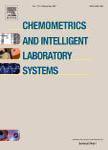版权所有:内蒙古大学图书馆 技术提供:维普资讯• 智图
内蒙古自治区呼和浩特市赛罕区大学西街235号 邮编: 010021

作者机构:Polish Acad Sci Inst Agrophys Doswiadczalna 4 PL-20290 Lublin 27 Poland
出 版 物:《CHEMOMETRICS AND INTELLIGENT LABORATORY SYSTEMS》 (化学计量学与智能实验系统)
年 卷 期:2016年第151卷
页 面:136-145页
核心收录:
学科分类:07[理学] 0804[工学-仪器科学与技术] 0714[理学-统计学(可授理学、经济学学位)] 0703[理学-化学] 0701[理学-数学] 0811[工学-控制科学与工程] 0812[工学-计算机科学与技术(可授工学、理学学位)]
主 题:Chemometry Raman images Plant cell wall K-means Hierarchical clustering Nonnegative matrix factorization
摘 要:The aim of this contribution was to develop methods of Raman spectral data analysis with respect to its spatial distribution, produced by a signal deriving complex biological substance. A novel approach based on nonnegative matrix factorization (NMF) combined with the clustering algorithms was introduced for analysis of plant tissue chemical composition. The multivariate approach was tested on the Raman maps of two different tissues of carrot root (Daucus carota L. subsp. Sativus) - xylem and cambium were captured and analyzed. The initial step of analysis involved pre-processing of individual spectra on two interconnected information levels spatial and spectral. The proposed approach allowed successful removal of unwanted and corrupted sections of data and replace it with new interpolated values using the nearest neighborhood. The NMF algorithm was tested on refined experimental datasets and showed great performance at reducing the dimensionality of large quantities of spectral information. It also allowed to obtain the pure spectra of individual data components and their concentration profiles which were easily interpretable and had high resemblance to the original data. The output of the NMF analysis was used as a starting point for two clustering algorithms k-means clustering and hierarchical clustering methods. Both methods converged with similar results providing precise spatial separation of spectral data according to the most predominant component (pectins, cellulose and lignins) in specific area of studied tissues. Obtained clusters distribution showed good match not only with chemical component distribution but also with structural features of tissue samples. Moreover, the proposed method of Raman images analysis allowed to blind spectral separation resulting in rapid and robust analysis of cell wall chemical composition with respect to its spatial distribution. (C) 2015 Elsevier B.V. All rights reserved.